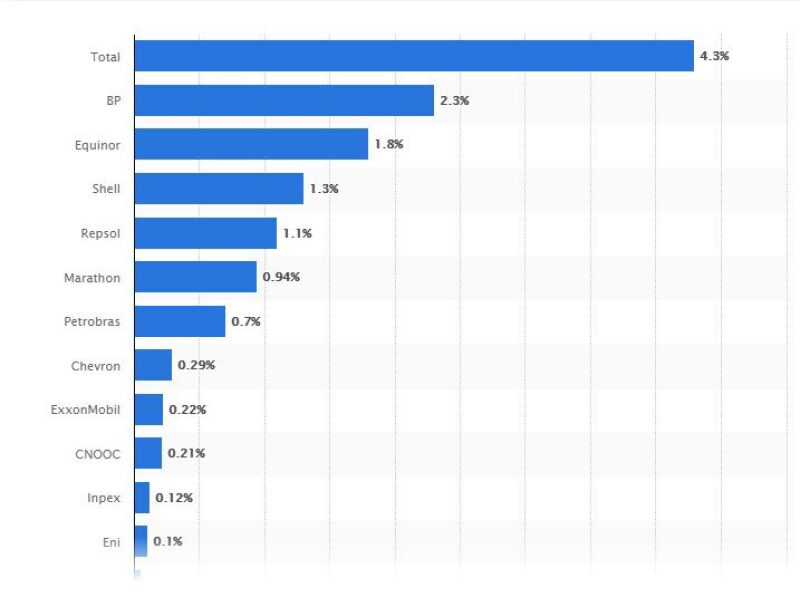The 12 members of the Oil and Gas Climate Initiative (OGCI), comprising some of the world's largest oil and gas companies, have for the first time pledged to reduce greenhouse gas (GHG) emissions as a proportion of aggregated output. Together, the companies account for over 30% of the world’s oil and gas production.
The collective agreed to reduce the average carbon intensity of their aggregated upstream oil and gas operations to 20–21 kg of CO2e /BOE by 2025, down from a collective baseline of 23 kg CO2e/BOE in 2017. [CO2e is carbon dioxide equivalent, a standard unit for measuring carbon footprints. It expresses the impact of each different GHG in terms of the amount of CO2 that would create the same amount of warming.]
The target covers both carbon dioxide and methane emissions from member companies' operated upstream oil and gas exploration and production activities, as well as emissions from associated imports of electricity and steam.
Liquefied natural gas and gas-to-liquids are not included in the carbon-intensity target.
OGCI’s members, which include BP, Shell, ExxonMobil, Total, Chevron, Saudi Aramco, CNPC, Eni, Equinor, Occidental Petroleum, Petrobras, and Repsol, said this reduction is consistent with steps needed to support the Paris Agreement goals.
The companies said they plan to improve energy efficiency, reduce methane emissions, minimize flaring, electrify operations, use renewable electricity where possible, co-generate electricity and useful heat, and deploy carbon capture, use, and storage
Critics have pointed out that "intensity" means emissions per unit of output, as opposed to absolute reductions. If production levels remain constant, the absolute emissions will be reduced equivalent to the energy use of 4–6 million homes. On the other hand, as production increases, absolute emissions still can rise.

Source: Statista.
The new intensity targets fall short of those set by the consortium’s European members. Saudi Aramco had an upstream carbon intensity of 10.1 kg CO2e/BOE in 2019, its annual report showed. Norway’s Equinor aims to reduce its CO2 intensity to below 8 kg/BOE by 2025.
On the other hand, absolute targets have been set by Eni, Repsol, and BP, who pledged to cut emissions by 80–100% across their oil and gas production by 2050. Eni leads the field with an interim target of cutting emissions by 30% on an absolute basis by 2035.
In July, China's CNPC announced a new target to reduce methane-emission intensity by 50% between 2019 and 2025.
Also in July, Brazil's Petrobras issued its second climate report, confirming new emissions targets and announcing its support for the Task Force on Climate-Related Financial Disclosures (TCFD) reporting guidelines, making it the first oil and gas company outside Europe to support the TCFD.


